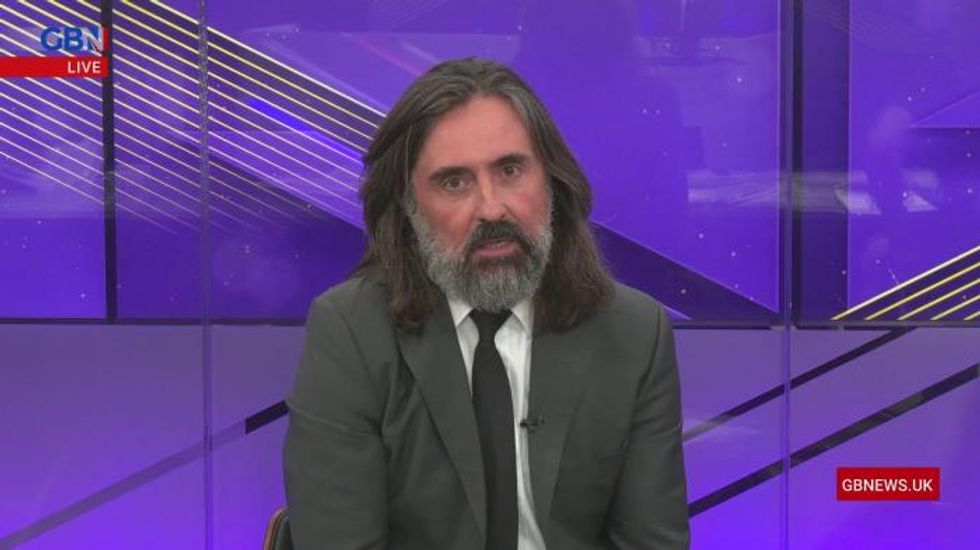Don't Miss
Most Read
Trending on GB News
With Queen Elizabeth II dies the only version of Britain most of us alive today have ever known.
During a reign of 70 years and 214 days – the longest of any British monarch – she had been the most famous and most recognised woman alive. Not just here at home but all around the world she was simply, The Queen.
Her thread is woven into the fabric of the nation. Stamps and coins are the least of it. There is no denying her dying is a moment around which much must and will shift and reshape, becoming permanently altered. This is world history, happening right now.
There is no denying either that for millions of people the queen had been a fixed point, constant and as seemingly permanent a fixture as any statue, or town cross, or church steeple. Like goodness knows how many others around the country, my mum cried at the news.
People need constancy, and fixed points by which to navigate. For countless numbers of people, the queen was that constant in a landscape everchanging.
In 1953, the year of her coronation, the world was an utterly different place. That same year Dwight D. Eishenhower was inaugurated as the 34th President of the USA. There’s been a dozen more American presidents since then. There were just over 2.5 billion people alive in the world in 1953. When she came to the throne, Britain had more than 70 territories overseas. By the end of her life and reign, there were just 16 Commonwealth realms. Joe Stalin died three months before Elizabeth II was crowned. Edmund Hilary and Tenzing Norgay summited Everest for the first time that year, and news of their success was broadcast to the nation on the morning of the coronation.
Queen Elizabeth II died on Thursday at the age of 96.
Lewis Whyld
Francis Crick and James Watson discovered the double helix structure of human DNA in 1953 and Elizabeth II has been coiled through the DNA of Britain ever since.
Her first prime minister was Winston Churchill – a man born in 1874 when Victoria was still on the throne and only 13 years a widow. The river of time and British history she bridged is extraordinary.
Everything that has happened here in Britain, and indeed around the world for a biblical lifetime of three score years and ten, has done so during the reign of Elizabeth II. Her death is a moment of history the like of which, in all honesty, no one will ever see again. In so many ways nothing changes – and yet in other, deeper and fundamental ways her dying changes everything. It is subtle, and also seismic. Her absence alters the landscape like the falling of an oak tree.
After a lifetime of coins with a queen facing right, new ones will feature a king facing left. New passports will be issued in the king’s name. Barristers appointed by the new monarch will be KCs instead of QCs. The national anthem will call upon God to save the king. In criminal court cases, the R denoting the crown will stand for Rex and not Regina. Stamps, medals, insignia on state documents. ER-II on police helmets will change to C-III. It is all in the details, but details matter.
There might be a case for claiming the most memorable monarchs in British history have been two women named Elizabeth.
Neil Oliver has paid tribute to Her Majesty following her death.
Image: GB News
During her own exceptionally long reign, Elizabeth I did nothing less, you might say, than create the notion of nationhood for England.
She came to Tilbury, on the Thames, on August 9, 1588, to encourage 20,000 soldiers awaiting the arrival of the Spanish Armada. Eyewitnesses described her appearing like a goddess of war – clad all in white, a breastplate over her gown and astride a white horse. She addressed the waiting throng as, ‘My loving people’ and promised “… to live and die among you all; to lay down for my God and for my kingdom, and my people, my honour and my blood, even in the dust.”
She had, she said, the body of a weak and feeble woman, but the heart and stomach of a king.
Now the second of her name has died too, becoming her own part of the history of the world.
Elizabeth II did much, and many times, to give her subjects a sense of unity and union. As recently as this year her platinum jubilee gave many of those in need of togetherness a reason to come together as communities for the first time in long, hard months.
The world is as it was … and yet not. Whoever we are. Whatever our politics – or even our disregard of politics – this changes the fabric of the British landscape. Perhaps above all else it is simply strange to know that after all these years, a length of time that stretches out of sight for most, The Queen is gone. It is surely right to say she is an icon of duty and devotion to the task, and that we shall not see her like again. So physically small, the space she leaves behind is vast. Now we wait and watch all that must happen next.













